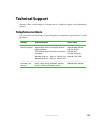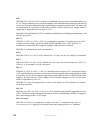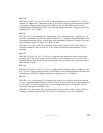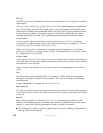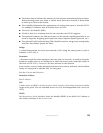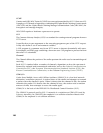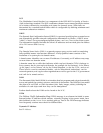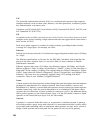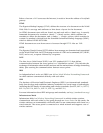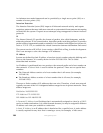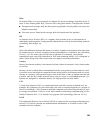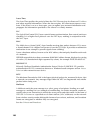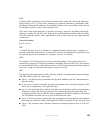180
www.gateway.com
CCMP
Counter mode/CBC-MAC Protocol (CCMP) is an encryption method for 802.11i that uses AES.
It employs a CCM mode of operation, combining the Cipher Block Chaining Counter mode
(CBC-CTR) and the Cipher Block Chaining Message Authentication Code (CBC-MAC) for
encryption and message integrity.
AES-CCMP requires a hardware coprocessor to operate.
CGI
The Common Gateway Interface (CGI) is a standard for running external programs from an
HTTP server.
It specifies how to pass arguments to the executing program as part of the HTTP request.
It may also define a set of environment variables.
A CGI program is a common way for an HTTP server to interact dynamically with users.
For example, an HTML page containing a form can use a CGI program to process the form
data after it is submitted.
Channel
The Channel defines the portion of the radio spectrum the radio uses for transmitting and
receiving.
Each 802.11 standard offers a number of channels, dependent on how the spectrum is
licensed by national and transnational authorities such as the Federal Communications
Commission (FCC), the European Telecommunications Standards Institute (ETSI), the
Korean Communications Commission, or the Telecom Engineering Center (TELEC).
CSMA/CA
Carrier Sense Multiple Access with Collision Avoidance (CSMA/CA) is a low-level network
arbitration/ contention protocol. A station listens to the media and attempts to transmit
a packet when the channel is quiet. When it detects that the channel is idle, the station
transmits the packet. If it detects that the channel is busy, the station waits a random
amount of time, then attempts to access the media again.
CSMA/CA is the basis of the IEEE 802.11e Distributed Control Function (DCF).
The CSMA/CA protocol used by 802.11 networks is a variation on CSMA/CD (used by
Ethernet networks). In CSMA/CD the emphasis is on collision detection whereas with
CSMA/CA the emphasis is on collision avoidance.




